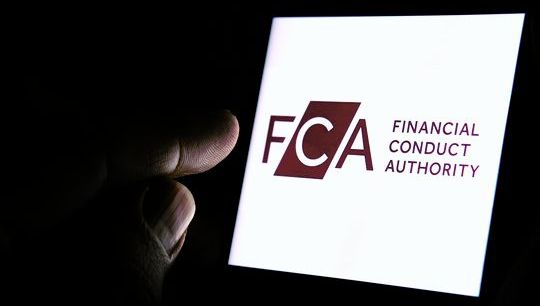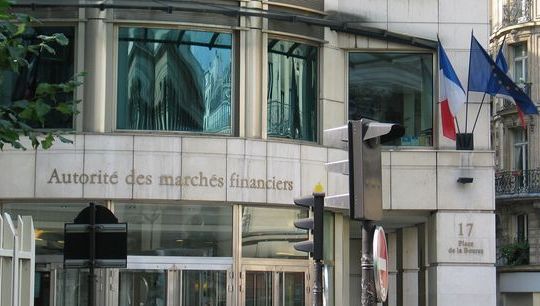Certain aspects re: ELTIF for retail investors and illiquid and liquid assets combined in one investment fund
By Manfred Dietrich; Johan Terblanche; Michelle Barry, Maples Group
Published: 23 September 2024
Since 10 January 2024, the revised regulation on European Long Term Investment Funds (ELTIF), the so-called ELTIF 2.0 is applicable.
Undoubtably ELTIF 2.01 is an improved legal framework allowing, inter alia, in a much more efficient manner an offering of private funds asset classes to investors which qualify as so called “retail investors” within the meaning of Annex II of MiFID II2 (retail investors), i.e. not qualifying as professional investors within the meaning of Annex II of MiFID II (professional investors). ELTIFs may of course be an interesting investment fund for professional investors – it is well noted that the requirements especially on the investments side are “lighter” for ELTIFs which are reserved for professional investors only. We would, however, focus here on ELTIFs which are open to retail investors and would need to comply with the requirements set for products allowing retail investor access.
An ELTIF 2.0 fund, offered to retail investors, needs, however, to ensure minimum investments in liquid (UCITS compliant) assets. Furthermore, such structures may need to ensure, to be able to effectively raise the interests of retail investors, reliance on the exemption in Article 18 of the ELTIF regulation as amended by ELTIF 2.0, meaning being able to handle and serve liquidity as per the applicable rules and to proceed in a prescribed manner for such potential redemptions. The recent positive developments - on 19 July 2024, the European Commission published its adopted regulatory technical standards as a delegated regulation (RTS) for ELTIF, please consult for details our Maples Group Industry Update on the topic (ELTIF 2.0 - European Commission Adopts RTS Delegated Regulation (maples.com)) – may, however, not take away on the one hand, the requirement to handle retail investor expectations/needs for their investment into an ELTIF and on the other hand, the requirement to operationally handle illiquid assets and, to the extent required, liquid (UCITS compliant) assets within the same fund structure.
While this previously described situation is not entirely new, as a combination of illiquid and liquid asset classes in one fund has already been the case for ELTIF before ELTIF 2.0. Going back much further, has also been the case, at least to a certain extent, in multi asset class funds, e.g. in funds established for “family and friends”, for example as Luxembourg so-called Part II Funds3 or as Luxembourg Specialised Investment Funds (SIF)4 and, after 2016, as Luxembourg Reserved Alternative Investment Funds (RAIF).5 Now it is the new ELTIF 2.0 which represents a fund regime much more attractive for managers as it provides a legal framework allowing to attract substantial investment of retail investors in a fund structure, offering (partial) access to private funds illiquid asset classes.
Below are listed some - non-exhaustive - considerations in relation to items which may be relevant for the establishment and running of a fund combining liquid and illiquid asset classes and being addressed to retail investors and where checks before/at the beginning of a project may be useful in order to best minimise the risk of avoiding discussions/surprises at a later stage.
Legal structuring
The long existing Part II Fund (initial legal text in Luxembourg at the occasion of the implementation of UCITS I in 1988), being the retail investor eligible alternative investment fund as well as the RAIF and the SIF are the preferred fund regimes of managers for the establishment of an ELTIF.
With a Part II Fund all retail investors may be targeted, while in a SIF or a RAIF, even though legally possible, for practical reasons usually solely retail investors investing at least EUR 100,000, so-called well-informed investors (Well-Informed Investor) are effectively targeted.
With the aim of a constant improvement of the Luxembourg fund toolbox, the Luxembourg legislator anticipated, inter alia, the upcoming ELTIF 2.0 on 10 January 2024, and already updated in July 2023 numerous aspects in the Luxembourg fund laws, including the Part II Fund, the SIF and the RAIF rules.
Key improvements are the following:
- As in SIF and RAIF enhanced flexibility in the choice of the legal forms available to Part II Funds - added to previously SICAV only in the form of a public limited company (SA or PLC) possibility to establish SICAV as SCA, SCS or SCSp;
- As in SIF and RAIF enhanced flexibility for subscriptions – these are now possible not only at net asset value but also at fixed amounts, as the case may be;
- Extended time to reach legal minimum capital (SIF, SICAR, RAIF, Part II);
- Simplification and clarification of rules for proceeding in case of a Depositary mandate termination (SIF, SICAR, Part II);
- Simplification of RAIF establishment formalities if legal form established before notary;
- Exemption, inter alia, from subscription tax (taxe d’abonnement) for Part II Funds qualifying as ELTIF; and
- Well-Informed Investor definition (SIF, SICAR, RAIF): minimum investment threshold reduced from EUR 125,000 to EUR 100,000.
While the Luxembourg fund toolbox offers this large range of flexibility a structuring analysis would still need to take into account numerous aspects, for example the expectations of the targeted clients, especially if retail investors, operational needs considering these investors, legal security and process etc.
Marketing/distribution to retail investors
The marketing of a professional investor dedicated alternative investment fund structure to a usually manageable number of professional investors processing directly subscriptions in funds, often structured as Luxembourg partnerships (special limited partnership (SCSp or SLP), common limited partnership (SCS or CLP), or partnership limited by shares (SCA or PLS), follows neither the same marketing channels nor identical principles compared to the marketing of a retail investor alternative investment fund structure.
This applies regardless of whether the retail investor dedicated alternative investment fund structure may target retail investors only beyond a minimum investment of EUR 100,000, like a RAIF, or also below, like a Part II Fund.
Placement agents or partners for the marketing are rarely the same (or at least not the same teams within an entity) as for professional investors and subscriptions for retail investors more commonly happen through the use of nominees (which needs to be properly disclosed and addressed in the respective fund documentation) or approaches similar to it.
In addition to the forgoing retail investor access may require facilitating a clearing possibility for the acquired fund shares/units as retail investors much more often expect their “share/unit” to be “delivered” into an investment account at their usual bank. This may require carefully considering the type of issuance (shares or units instead of investor accounts) and their character (“registered” or “book entry registered”), which may at the same time have an influence on the legal structure to be chosen (see above). Due to the difference regarding the retail investor a clearing in a SIF or a RAIF, having Well-Informed Investor Private Investors, is processed slightly differently from a clearing in a Part II Fund, the latter being open formally to all retail investors.
A typical capital call structuring as is usual for professional investors may need to be additionally explained to retail investors or potentially adjusted if targeted retail investors marketing is expected not to result in a success, based on the experience that such investors are used to a “cash-in cut-off-time” subscription – and, if applicable, redemption - systematic (used especially in retail investor funds targeting below EUR 100,000 investment).
Registrar and transfer agent
Alongside a larger number of retail investors investing smaller amounts comes the need for a Registrar- and Transfer Agency service (in-house entity of an initiator or external service provider) which can handle, e.g. from the perspective of the number of its employees, processes, and IT-facilities, not only a range of 5-30 professional investor set-up, but potentially hundreds of retail investors, potentially holding registered shares/units.
This is not, as such, problematic but may be a challenging element for an entity not active in this retail investor sector. Initial checks before the beginning of a project and in any case through a proper due diligence selection process are required.
Asset management aspects
Besides the proper management of the illiquid part of the portfolio, the eligibility of assets as UCITS eligible assets would need to be checked upfront (so-called pre-trade compliance). Either a discretionary manager can ensure this itself (team competence and technical set-up) or chosen service providers would need to be able to do this.
Liquid assets management (UCITS eligible assets) needs to be undertaken and in case a discretionary manager may not be able to do this in-house due to lack of respective teams and/or technical set-up, delegated managers/service providers would need to be appointed to ensure that the entire range of assets which may be relevant is covered. Liquidity management is of particular importance if the ELTIF is open for redemptions (as mentioned previously).
Administration of liquid and illiquid asset classes in one fund structure
Experience has shown that administrative service providing of illiquid assets and liquid (UCITS compliant) assets is usually done on different operational platforms, as IT-setups and processes and generally needs between the two worlds diverge a lot.
In case the administrative part is ensured internally with an entity of the initiator, the competence of the relevant services, the processes and especially the IT-set-up, just to name some of the important elements, need be checked as to their readiness for both worlds. The same goes for the choice of an external service provider. Also here, initial checks before the beginning of a project and in any case through a proper due diligence selection process are required.
Valuation
As for the administration services, the valuation of the assets by the chosen AIFM will also need to be properly thought through from the perspective of the two diverging asset classes. A properly functioning system of own valuation by the AIFM or delegated valuation using a delegated valuer or through the use of appraisers is needed, in the latter case provided that the respective valuation competence for all asset classes is available at the required level at the relevant chosen AIFM itself.
Conclusion
ELTIF 2.0 is a milestone of new fund legislation and opens a broad range of legal possibilities. Addressing certain operational elements with respect to the ELTIF particularities, especially where retail investors are targeted, is useful and recommended as solutions are available.
1. ELTIF 2.0: Regulation (EU) 2023/606 of the European Parliament and of the Council of 15 March 2023 amending Regulation (EU) 2015/760 as regards the requirements pertaining to the investment policies and operating conditions of European long-term investment funds and the scope of eligible investment assets, the portfolio composition and diversification requirements and the borrowing of cash and other fund rules (Text with EEA relevance)
2. MiFID II: Consolidated text: Directive 2014/65/EU of the European Parliament and of the Council of 15 May 2014 on markets in financial instruments and amending Directive 2002/92/EC and Directive 2011/61/EU (recast) (Text with EEA relevance) Text with EEA relevance.
3. Part II Fund(s): undertaking(s) for collective investment subject to part II of the Luxembourg Law of 17 December 2010 relating to undertakings for collective investment, as amended (the 2010 Law)
4. Luxembourg Specialised Investment Funds (SIF): fund subject to the Luxembourg Law of 13 February 2007 relating to specialised investment funds, as amended (SIF Law)
5. Luxembourg Reserved Alternative Investment Fund (RAIF): fund subject to the Luxembourg Law of 23 July 2016 on reserved alternative investment funds, as amended (RAIF Law)







